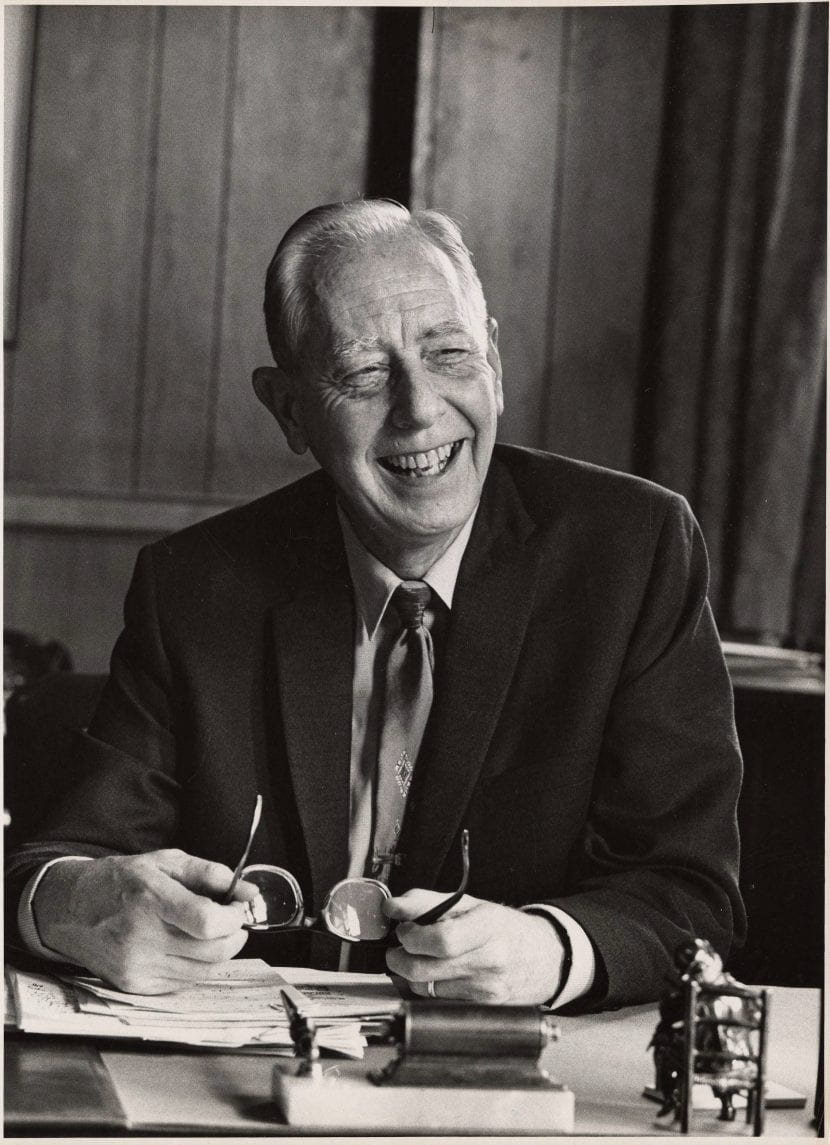To celebrate the inauguration of Kim Schatzel as Towson University’s 14th leader, we are looking back at the past leaders of the school. These essays are from a book we helped craft, Towson University: The First 150 Years.
President Earle Taylor Hawkins was in office as Towson evolved from its exclusive focus on teacher education into a liberal art and sciences college. And while it might be easy to characterize Hawkins as the last of the old Teachers College leaders, it would be equally valid to describe him as the first president of the modern era.
Hawkins did indeed have a strong background in Maryland’s history of teacher preparation. Like most of his predecessors he was a native of Maryland. He graduated summa cum laude from Western Maryland College in 1923, then went on to earn his Master’s of Education at Columbia University and his doctorate from Yale University in 1942.
From 1929 until 1938, Hawkins was principal of Bel Air High School in Bel Air, Maryland. In 1938, he was appointed to a new Maryland state superintendent position, the Supervisor of High Schools. He retained this position until 1947, when he was appointed the president of the State Teachers College at Towson. Hawkins took on this role at a time when the school itself was poised to undergo massive growth in student enrollment, expansion of educational programs, and an increase in campus facilities, due in no small part to the baby boom of the post World War II era.
His reputation spread beyond Maryland as he served as president of the American Association of State Colleges and Universities, vice president of the National Education Association, president of the Maryland Association of Higher Education, and president of the Maryland State Teachers Association. Additionally, Hawkins served as a board member of several organizations, including the Maryland Academy of Sciences, and the Maryland Historical Society. Hawkins also served on teams that surveyed the educational systems of Pakistan and the Philippines, and he was awarded honorary doctorates from Western Maryland College and Notre Dame College. Hawkins had the experience and broad perspective that would serve him well in leading the college to a new role in higher education.
In 1947, the school was still a teachers college and had been awarding baccalaureate degrees for only 12 years. Hawkins would oversee the school’s transformation into a liberal arts college in 1963, changing the name of the school to Towson State College.
While the public perception of Towson as a teachers college would be slow to adjust, the changes were more than in name only. By the time President Hawkins retired in 1969, Towson offered baccalaureate degrees in five fields — arts and sciences, teacher education, business administration, medical technology, and international studies, as well as a Master of Education degree in elementary and secondary education, and guidance counseling. The school population had grown from 600 students in 1947 to over 8,000, and to keep up with the demand, the buildings on campus had tripled from seven to 21.
It was Hawkins who understood the potential for growth and purchased land from Sheppard Pratt Hospital that gave Towson a campus of over 300 acres that stretches from York Road on the east to Charles Street on the west. It was Hawkins who turned down a proposal to make the school a part of the University System of Maryland, believing that Towson’s future lay in a different identity. A measure of growth in these years was that Towson became the second largest public institution of higher learning in Maryland.
